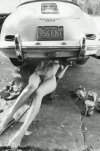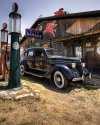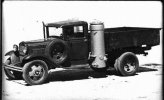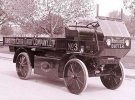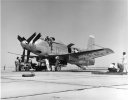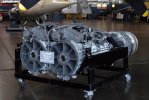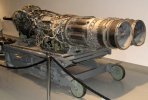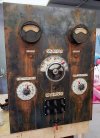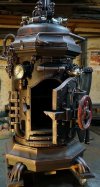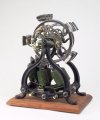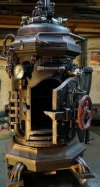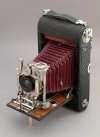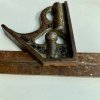Saw one take off from Edwards AFB. I was miles from it and it looked and took off like a DC-9. Then its nose was pulled up and the 'gas' was hit. In 15 seconds the exhaust glow disappeared in the clear sky overhead!I have seen the plane fly, impressive!
-
Sign up or login, and you'll have full access to opportunities of forum.
You are using an out of date browser. It may not display this or other websites correctly.
You should upgrade or use an alternative browser.
You should upgrade or use an alternative browser.
Random picture thread. (Real photos rather than AI please)
- Thread starter Gibbs505
- Start date

Gibbs505
SERVORUM DOMITOR
It was in 1986 at the Abbotsford air show, one of the first times they were on show outside the USA. Flying slow but not a dogfighter!!! No sharp turns!!Saw one take off from Edwards AFB. I was miles from it and it looked and took off like a DC-9. Then its nose was pulled up and the 'gas' was hit. In 15 seconds the exhaust glow disappeared in the clear sky overhead!
Loinclothslave
slave to the whip
Or just swat her backside with the number plate?That license plate is expired.
View attachment 1462852
Give her the standard 20 strokes of the cane for the offense.
Hugin&Munin
Presenter Of Images
Loxuru
Graf von Kreuzigung
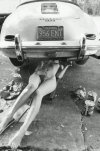 Advice to Tree : check your brake pressure before driving,, after Barb has finished the repairs!
Advice to Tree : check your brake pressure before driving,, after Barb has finished the repairs! 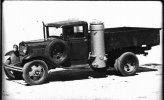 This looks like a wood gas engine, used in WWII (mainly in occupied territories) as an 'Ersatz' system because of war shortage of normal car fuels. Highly unreliable, and dangerous to explode and spread hot toxic fumes in a collision., that could kill all the occupants
This looks like a wood gas engine, used in WWII (mainly in occupied territories) as an 'Ersatz' system because of war shortage of normal car fuels. Highly unreliable, and dangerous to explode and spread hot toxic fumes in a collision., that could kill all the occupantsLoxuru
Graf von Kreuzigung
Mentioning double powerbanks :The Douglas A2D had double the power of the D1 by means of a strange twin turboprop arrangement:
View attachment 1463134View attachment 1463133View attachment 1463132
The German WW2 bomber Heinkel He-177 ‘Greif’ (‘Griffin’), was the only Axis bomber (apart from the four engine Italian Piaggio P108, that hardly has seen production), capable of matching the capacities of planes like the Allied B-17 or Lancaster. Its power system was ‘four engine’, but in order to use it as a dive bomber too (another mad idea of Hitler), two coupled engines drove one four blade propellor.
The He-177 featured some novelties, like remote controlled machine gun turrets (such as would be installed on the American B-29), in order to save the weight and space for gunners, and to increase the structural strength of the hull.
The coupled engines were however a nightmare for maintenance (too cramped space), and had a problem with dissipating heat trough the exhausts. Undesired building up of heat in the engine nacelles caused mixtures of oil spills and dirt to catch fire easily, leading to many deadly accidents with the aircraft.
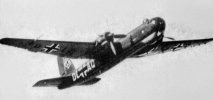
Thank you, Lox. I thought I knew a bit about WW2 aviation but I can honestly say that I've never heard of an He 177Mentioning double powerbanks :
The German WW2 bomber Heinkel He-177 ‘Greif’ (‘Griffin’), was the only Axis bomber (apart from the four engine Italian Piaggio P108, that hardly has seen production), capable of matching the capacities of planes like the Allied B-17 or Lancaster. Its power system was ‘four engine’, but in order to use it as a dive bomber too (another mad idea of Hitler), two coupled engines drove one four blade propellor.
The He-177 featured some novelties, like remote controlled machine gun turrets (such as would be installed on the American B-29), in order to save the weight and space for gunners, and to increase the structural strength of the hull.
The coupled engines were however a nightmare for maintenance (too cramped space), and had a problem with dissipating heat trough the exhausts. Undesired building up of heat in the engine nacelles caused mixtures of oil spills and dirt to catch fire easily, leading to many deadly accidents with the aircraft.
View attachment 1463259
Loxuru
Graf von Kreuzigung
You're welcome, Wragg.Thank you, Lox. I thought I knew a bit about WW2 aviation but I can honestly say that I've never heard of an He 177
Despite over thousand having been built, its legacy is rather tarnished by the development problems (too many mission profiles vs. expected performances) and particularly the engine fire problems. He-177 was hardly ever used for its primary role, massive bombing attacks, and often, more were lost due to technical problems than by enemy fire.
A particular role, it is best remembered for, was as carrier of anti-shipping radio guided glide bombs.
wulf
God-Emperor
She needs to be intesively 'questioned' about her late night activities, and any friends she may hang out with.and speaking of aerodynamics and doubling the power... this witch should fly better than the old one i posted
View attachment 1463135
Hugin&Munin
Presenter Of Images
Hugin&Munin
Presenter Of Images
Its aView attachment 1463669 Please don't ask me what this thing is supposed to be. I have no idea!
whatchamacallit
Loinclothslave
slave to the whip
Early model dalek, just insert your slave!View attachment 1463669 Please don't ask me what this thing is supposed to be. I have no idea!
Hugin&Munin
Presenter Of Images
Mikerytel
Senator
The farm hand woke up. She's staying in the barn as to not shame the family for her aversion to clothes



